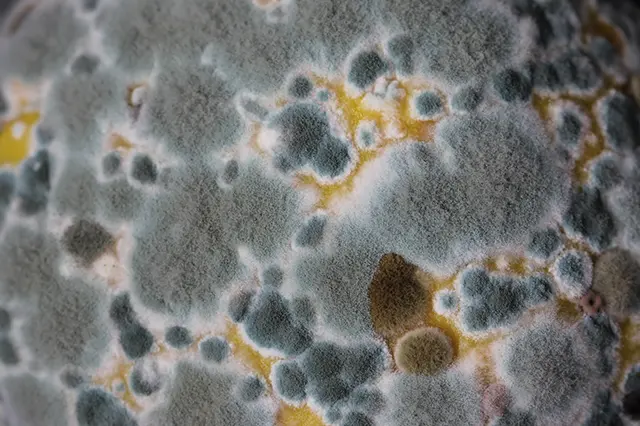Black Mold: What You Should Know About It And How To Remove It
Black mold is one of the most dreaded and misunderstood fungi in the world. It’s not just a problem in humid, warm environments – it can also thrive in cold environments, too. If you live in an area where black mold is common, you may be wondering what to do about it. In this blog post, we will discuss the dangers of black mold, how to identify it, and how to remove it from your home. We will also provide some tips on prevention so you don’t have to face this nightmare again.
What is Black Mold?
Black mold is a type of fungus that can grow on surfaces in cold, dry climates. It is black because of the mycelium—the vegetative part of the fungus—which absorbs light to produce energy. Black mold is often found in damp areas, such as attics, basements, and crawl spaces. The fungus can cause allergies and asthma symptoms, and it can also damage buildings.
To remove black mold, you will need a plastic bag and a vacuum cleaner with a hose attachment. Cover the area where the mold is growing with the plastic bag. Turn on the vacuum cleaner and wait until the Mold has been sucked up into the hose attachment. Dispose of the bag and vacuum cleaner safely.
What Causes Black Mold Growth?
There are many things that can cause black mold to grow. However, the most common causes are moisture and stale air. When these two things meet, black mold can start to grow. There are a few ways to prevent black mold from growing in your home:
Minimize moisture problems: Make sure that there is minimal moisture content in the air. This can be done by using proper window treatments, sealing cracks in the structure, and installing humidifiers.
Make sure that there is minimal moisture content in the air. This can be done by using proper window treatments, sealing cracks in the structure, and installing humidifiers. Avoid stale air: A major problem with bad ventilation is that it allows stale air to accumulate. Make sure that you open all of your windows and doors as much as possible to allow fresh air into your home. Also, try to use appliances and materials that absorb CO2 rather than create it (like paints).
A major problem with bad ventilation is that it allows stale air to accumulate. Make sure that you open all of your windows and doors as much as possible to allow fresh air into your home. Also, try to use appliances and materials that absorb CO2 rather than create it (like paints). Clean up any spills: If something falls on black mold or if water spills on it, quickly clean it up so the mold doesn’t have a chance to multiply.
Symptoms of Black Mold Exposure
If you suspect that you or someone else has been exposed to black mold, it’s important to take the necessary precautions to protect yourself and the affected individual. Here are some of the most common symptoms of black mold exposure:
-Dry, cracked skin
-Itchy skin
-A musty smell
-Hay fever like symptoms (itchiness, redness, watering eyes)
-Nausea and vomiting
-Rapid breathing
If you think you may have black mold, contact your doctor or a professional cleaner.
How to Remove Black Mold from Your Home
The spores of black mold are actually capable of traveling through the air and infecting other areas in your home. Black mold can be difficult to remove, but there are several steps you can take to try to get it out.
1. Remove any materials that may have been contaminated by the mold. This includes anything that has been in contact with the black mold, such as furniture, fabrics, or ceilings. If possible, use a professional cleaner to clean everything up.
2. Seal all cracks and openings around doors and windowsills to prevent air from coming in and contaminating the area.
3. Use a dehumidifier to remove moisture from the area, which will help inhibit the growth of black mold.
4. Apply a fungicide or pesticide to surfaces where visible mold is present. Be sure to read the product label carefully before using it, as some pesticides can also be harmful if not used correctly.
5. Call a professional to help clean the area and remove the mold.
Prevention Tips for Black Mold
If you are thinking of buying or renting a property with potential black mold exposure, here are some prevention tips to keep in mind:
– Inspect the property before signing any contract. If there is visible mold, don’t move in – you may be exposing yourself and your family to harmful respiratory spores.
– If you do decide to move in, take steps immediately to remediate the problem. Remove all visible evidence of mold and seal all cracks and openings in the building with Duraflame® or another flame-retardant material. Encourage your neighbors to do the same.
– If you have asthma or other respiratory problems, be sure to tell your doctor about possible black mold exposure. He or she can give you advice on how to protect yourself from infection.
– If you experience any symptoms of black mold exposure, such as coughing, fever, or shortness of breath, seek medical attention.
– Learn more about black mold and its effects on your health by visiting the Centers for Disease Control and Prevention (CDC) website.
– You can also find helpful prevention tips from the American Lung Association (ALA) website.
Conclusion
Thank you for reading this article on black mold and how to remove it. Sadly, this problem is all too common these days, as exposure to moisture and mildew can cause black mold to grow quickly. If you have black mold growing in any part of your home, please do not wait – take action right away and remove the mold using one or more of the following methods: a bleach solution, a vacuum cleaner with a HEPA filter, or an enzyme cleaner. Remember: always use caution when removing anything from your home that could be dangerous – be sure to read the product label before using it! Thank you again for taking the time to read this article – I hope it has helped you understand what black mold is and how to prevent it from happening in the future.

